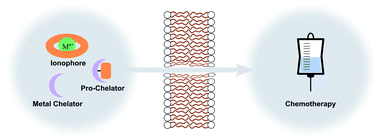Transition metal chelators, pro-chelators, and ionophores as small molecule cancer chemotherapeutic agents
Abstract
Cancer is among the leading causes of death worldwide. Although a number of new treatment options have been developed in recent years, there remains a need for improved chemotherapies. The primary challenges facing new cancer drugs include: (1) improving patient quality of life, (2) overcoming drug resistance and (3) lowering reoccurrence rates. Major drawbacks of current chemotherapeutics arise from poor selectivity towards cancer cells, dose limiting toxicities, compliance-reducing side effects, and an inability to address resistance mechanisms. Chemotherapeutics that fail to achieve complete eradication of the disease can also lead to relapse and promote treatment resistance. New strategies to overcome these drawbacks include the use of transition metal chelators and ionophores to alter selectively the concentrations of iron, copper, and zinc in cancer cells. A number of metal chelators have successfully demonstrated cytotoxicity and targeted activity against drug-resistant cancer cells; several have proved effective against cancer stem cells, a significant cause of tumour reoccurrence. However, problems with formulation and targeting have been noted. Recent efforts have thus focused on the design of pro-chelators, inactive versions of chelators that are designed to be activated in the tumour. This is an appealing strategy that may potentially increase efficacy towards cancer-resistant malignant cells. This Tutorial Review summarizes recent progress involving transition metal chelators, pro-chelators, and ionophores as potential cancer chemotherapeutics. We will focus on the reported agents that are able to coordinate iron, copper, and zinc.



 Please wait while we load your content...
Please wait while we load your content...